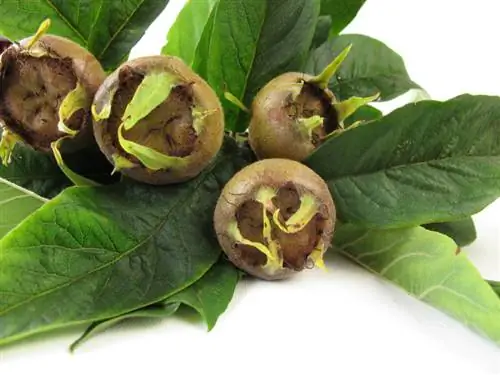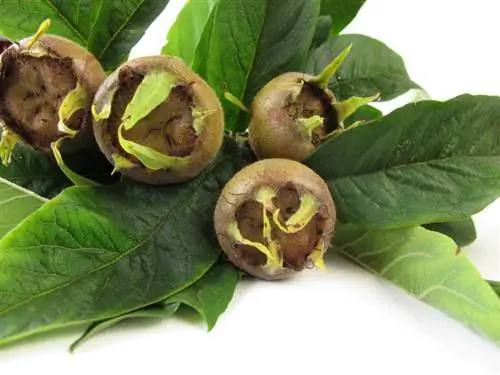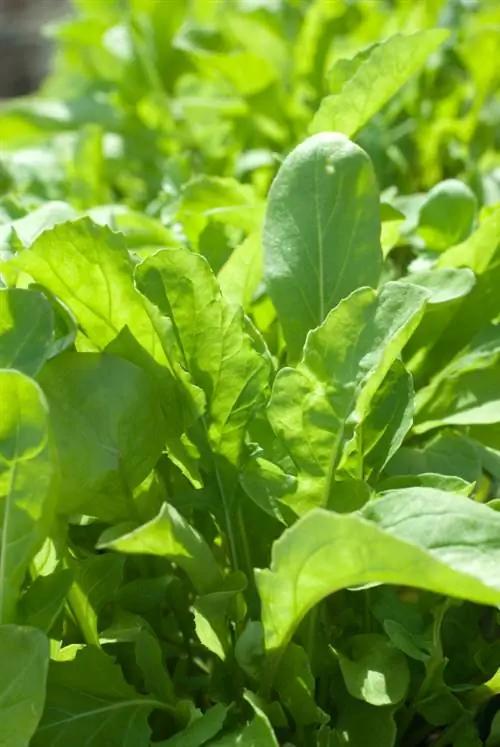- Author admin [email protected].
- Public 2023-12-16 16:46.
- Last modified 2025-01-23 11:20.
The medlar used to be found in many monastery gardens. In the Middle Ages it was considered a popular fruit tree. But now it has been almost forgotten and is rarely found in gardens. It requires hardly any care

What care does a medlar need?
The care of the medlar includes regular watering in the first year of growth, if necessary fertilizing with horn shavings or garden lime and occasional topiary. The plant is frost hardy and not very susceptible to diseases or pests.
What diseases and pests can plague them?
The medlar is not very susceptible to fungal diseases. Only if the soil is too moist is there a risk that monilia rot, fire blight or leaf spot will make life difficult for it. If it is infected, the affected areas should be cut away immediately down to the he althy wood.
Pests also don't like to find themselves on the medlar. At most, it will be attacked by aphids when it is young and has little strength. However, this plague does not necessarily have to be counteracted with chemical pesticides.
Does the medlar need to be watered regularly?
No. The medlar has a moderate water requirement. During its first year outdoors, it should be regularly supplied with water so that it can take root well. Tap water can easily be used for watering, as the medlar loves lime. Later it becomes largely independent and only needs to be watered in dry times. Ideally, the soil at the location is kept slightly moist.
How is the medlar fertilized?
The medlar does not necessarily have to be fertilized. She is undemanding and can do without it. However, to stimulate its growth, it can be given fertilizer two months after planting. Horn shavings (€52.00 on Amazon) or garden lime are ideal for this.
Is a cut necessary? If yes, how?
- annual cut unnecessary
- if applicable train a shrub to become a medlar tree
- if you get out of shape, easy topiary in spring
- Cutting every few years
- pruning too hard leads to crop failure (fruits on the outermost shoots)
- remove old branches that are too close together
Does the medlar need winter protection?
Since the medlar is frost hardy, it does not need winter protection. Only in rough areas should it be protected from excessive frost in the first two years with fleece or a thick layer of leaves in the root area.
Tips & Tricks
The medlar can cope without outside help after just two years. This makes it an ideal plant for parks and squares as well as for stressed gardeners.






